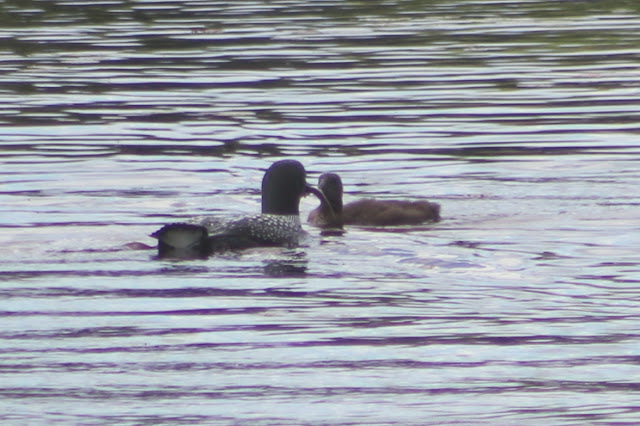A beautiful stretch of fine weather graced a visit north of the notches this week. Though it was cool at night the days were bright and clear with a rare cloud-free four days in a row at the summit of Mount Washington.
 |
| Looking north down Great Gulf with Mts. Jefferson, Adams, and Madison towering above. |
On a hike in the northern Presidentials I spent a fair amount of time relishing the unique wildflowers growing in that harsh alpine ecosystem, and then even more time with the field guide trying to identify them. Some, such as Diapensia I should have known.
 |
| Diapensia (Diapensia lapponica) at 5600' on Mt. Washington. |
This alpine plant grows only a few inches high and was just starting to boom.
Another alpine flower I saw was the mountain avens.
 |
| Mountain avens (Geum peckii) at 5400' on Mt. Clay. (Accompanied by bunchberry.) |
This plant is found only in the White Mountains in New Hampshire and on a single tiny island off the cost of Nova Scotia, Brier Island. Although the leaves remain close to the ground, the flowers are on stems a couple of inches high which allows them to track the sun as it traverses the summer sky. There are eight other species of avens in North America but this is the only one that grows above the tree line. [Ref: US Forest Service]
Next is the Labrador tea, a member of the rhododendron family.
 |
| Labrador tea (Rhododendron tomentosum) at 5100' on Mt. Clay. |
This low-growing shrub is found in many areas above and below tree line in the white mountains, and as its name suggests, it has been used by native Americans for centuries to make tea as well as medicines to treat a number of ailments. [Ref: Adirondacks Forever Wild] According to Adirondacks Forever Wild:
Native Americans made extensive use of Labrador Tea to treat a wide variety of ailments, including asthma, rheumatism, burns, and diseases of the liver and kidney. For instance, the Algonquin reportedly used an infusion of the plant for headaches and colds. The Chippewa used a powder containing powdered root to apply to burns and ulcers. The Cree used an infusion of the flowers for insect sting pain and rheumatism; they used a poultice of leaves to apply to wounds. The Oweekeno used an infusion of leaves as a remedy for a sore throat.
There were also many bluets lining the path along the Gulfside Trail.
 |
| Bluets on the left and the much larger false hellebore on the right side of the Gulfside Trail. |
Another excursion in the Mount Washington area took us along the Presidential Rail trail to Cherry Pond where we found, believe it or not, loons! And this pair of loons is well ahead of our Wicwas pairs, already having a chick hatched which is old enough to have molted at least once, replacing its dark brown baby feathers with lighter-colored plumage.
 |
| The loon pair on Cherry Pond in Jefferson. |
They apparently have only one chick so it's getting all the food the parents collect, fueling its rapid growth.
Back on Wicwas there's not much to report on our loons as they patiently wait for their eggs to hatch, sharing duty on the nest. I did see the male of the northern nest off-duty at one point, and he kindly exposed his leg band to prove his identity.
 |
| "Yes, it's me." |
I had to spend more time with the field books looking up plants I saw in the marshes around the lake, one of which I recognized as having the characteristics of a carnivorous plant; I need to read more about this one for a future journal entry.
 |
| Round-leaved Sundew (Drosera rotundifolia) - a carnivorous plant worthy of further study. |
While we were away I set my trail camera along the road to see who visited while we were gone and there were a couple of large creatures that passed by.
 |
| Papa bear in full daylight. (Especially for you, Stephanie!) |
Based on the appearance of this doe I wouldn't be surprised if there were a fawn following along behind her. She had better keep a close eye out for last week's bobcat!
It's also turtle season - keep a watch out for mother turtles crossing the road to find a sandy spot to bury her eggs.
 |
| Mrs. Painted Turtle laying her eggs. |
Loon chicks, fawns, turtle eggs - early summer is a time of birth. I'll end with one more look at the Rock Pile on the birth of a new day.
 |
| Mount Washington greets a new day on July first. |
Happy Fourth of July - I hope you enjoy a warm and safe weekend!


No comments:
Post a Comment